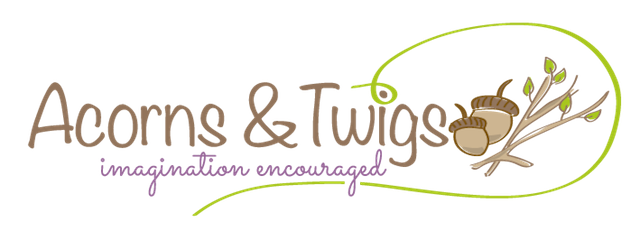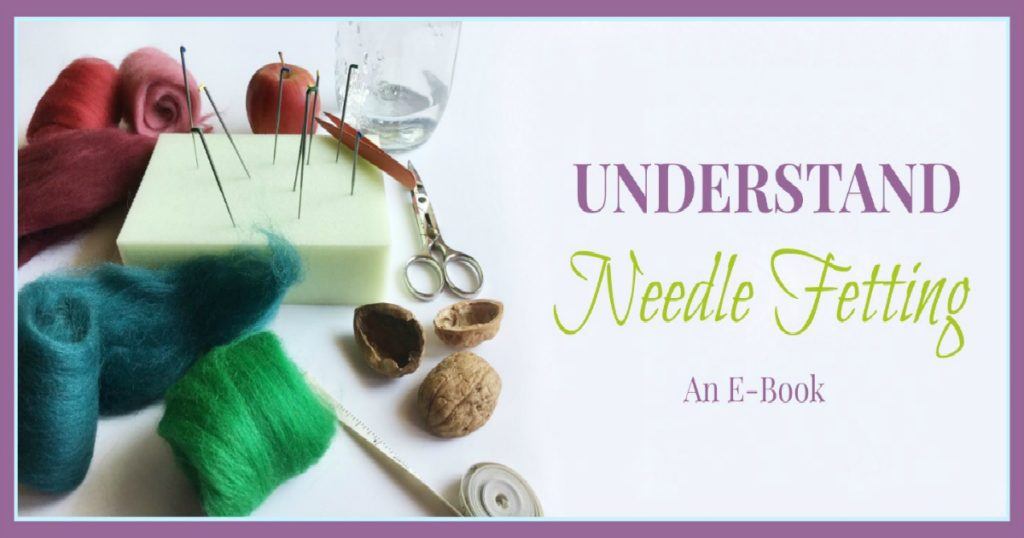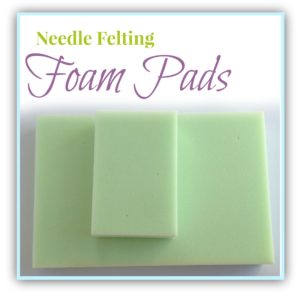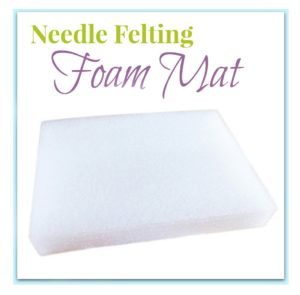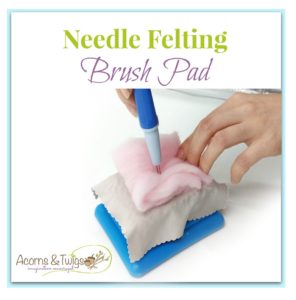What is a Felting Pad?
Needle Felting Pads
Besides a felting needle, a felting pad is your second most important tool when needle felting. A felting pad serves as an underlay for your project, and protects your needles and table top or lap.
There are several different types of underlays available, non of which are better than the other. It is simply a matter of preference. As a beginner, you probably have no idea which felting pad you should choose. In this article I want to introduce you to the most common types and what give you an idea of their differences.
At the end of this article I have provided hyperlinks to the different products in our shop that I have mentioned in this article.
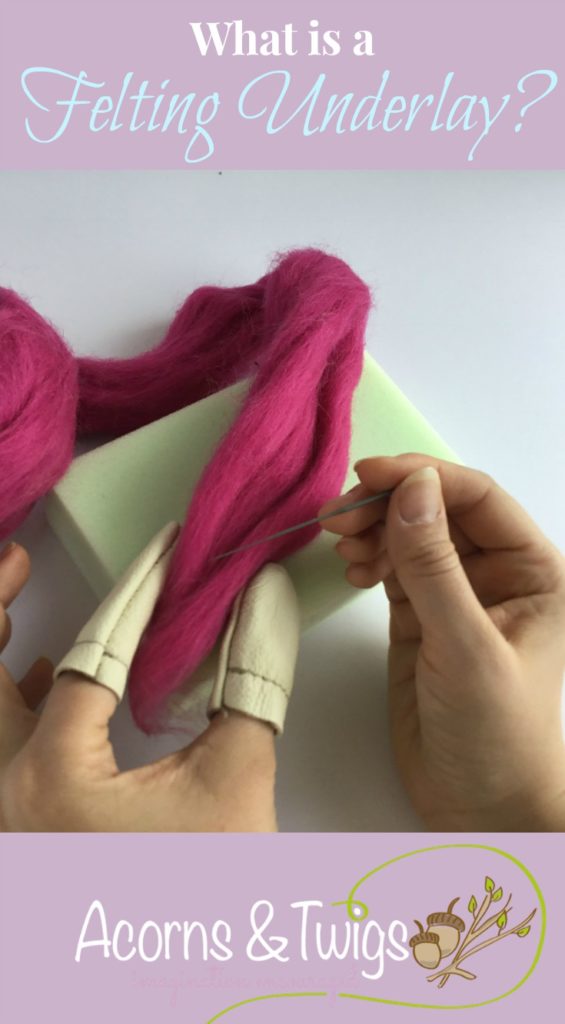
Felting Needle Underlays
Your project should always lay on a protective underlay. It is very important, and can serve a few different purposes.
If you are felting a flat piece, such as a 2D wool painting, then you want your work to be as flat as possible. In that case, your underlay should be rather firm and smooth. Since you will constantly be punching through your work and into the underlay, you don’t want it to be to firm, and risk your needle breaking.
Sometimes you might want to pin your work down to your underlay to prevent it from shifting.
Another quality your underlay should provide is a healthy posture and a comfortable work area so you can keep punching away for hours and hours, with out breaking you back.
Make sure your underlay is a good size. I recommend getting the biggest you can find. Better to big than to small. Although, if you will be traveling a lot with your felting projects, then for obvious reasons, a smaller underlay will suit you better.
Last, but certainly not least you want to find an underlay that your fibers will not stick to. Not only is that very annoying, but also counterproductive and damaging to your work. Plus, you might end up with red fibers on your snow man if you just got done making a red riding hood (this is just an example!).
Recap
A needle felting underlay should:
- Have a flat, stable & smooth surface
- Be soft and cushioning
- Have the possibility of fastening something to it
- Provide comfortable usage
- Be sufficient in size
- Be transportable
- Not be feltable
Your Options
So many wishes at once?? Let’s see if we can find a product that meets as many criteria as possible.
Brush Mat for Needle Felting
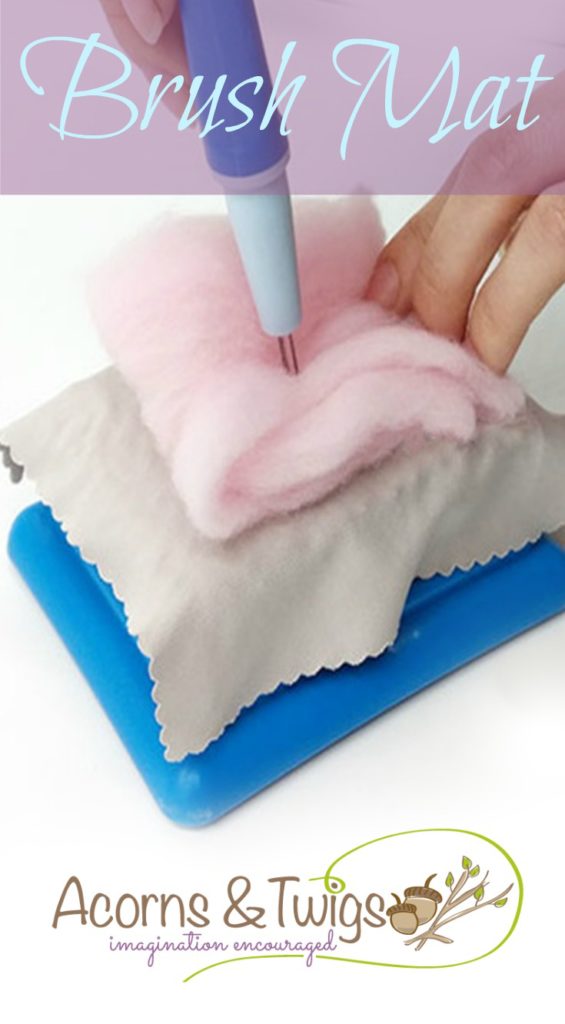
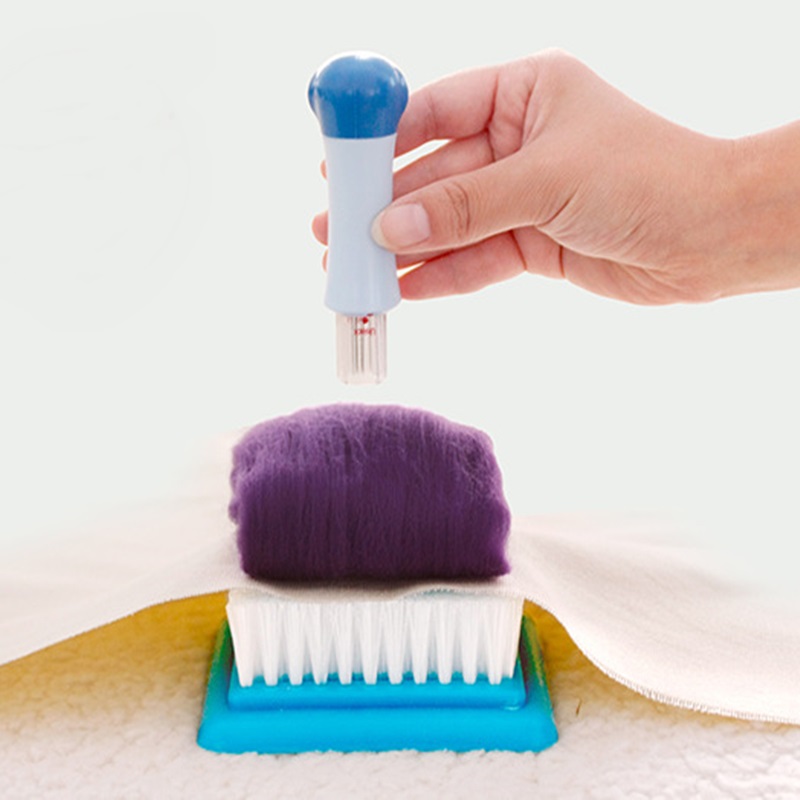
Most craft supply stores offer a brush mat for needle felting. It kinda resembles a fingernail brush in XXL.
Your wool can be laid onto the bristles and is felted directly so. I recommend taking a small piece of cloth and laying it onto the bristles to avoid the wool sticking to the underlay.
The bristles can handle the punching needle very nicely, with out any damage to your underlay.
Unfortunately, the brush mat is very small and therefore neither suitable for larger jobs, nor very convenient to use.
You can not fixate your work to the mat, and if used for longer periods can start to scratch and irritate your hands. It is also the heaviest of all options that I am presenting to you.
- flat,
stable & smooth surface softand cushioningpossibility of fastening something to itcomfortable usagesufficient in size- transportable
- not feltable
Styrofoam Felting Mat
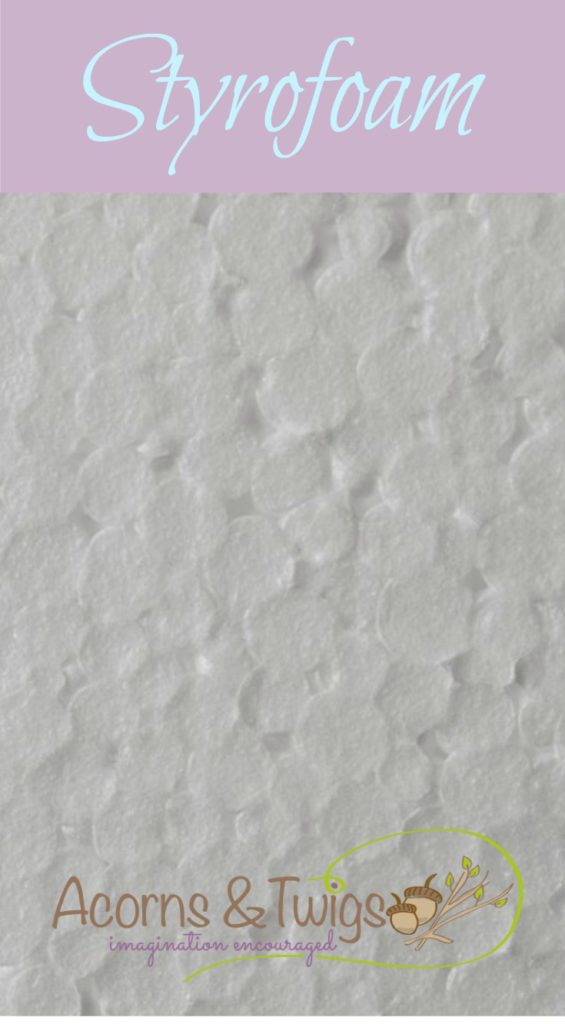
Please do not use normal styrofoam. I have seen this been done before and it is not a good idea. First off, styrofoam is feltable. In fact, there is a felting technique focused completely around felting onto a styrofoam form. If you use standard styrofoam, your wool will stick to the underlay and look terrible. On top of that disadvantage, it also breaks and crumbles very easily.
- flat, stable & smooth surface
- soft and cushioning
- possibility of fastening something to it
- comfortable usage
- sufficient in size
transportablenot feltable
If you want to know even more about needle felting then I suggest you take a look at our e-book “Understand Needle Felting“.
Foam Felting Pad
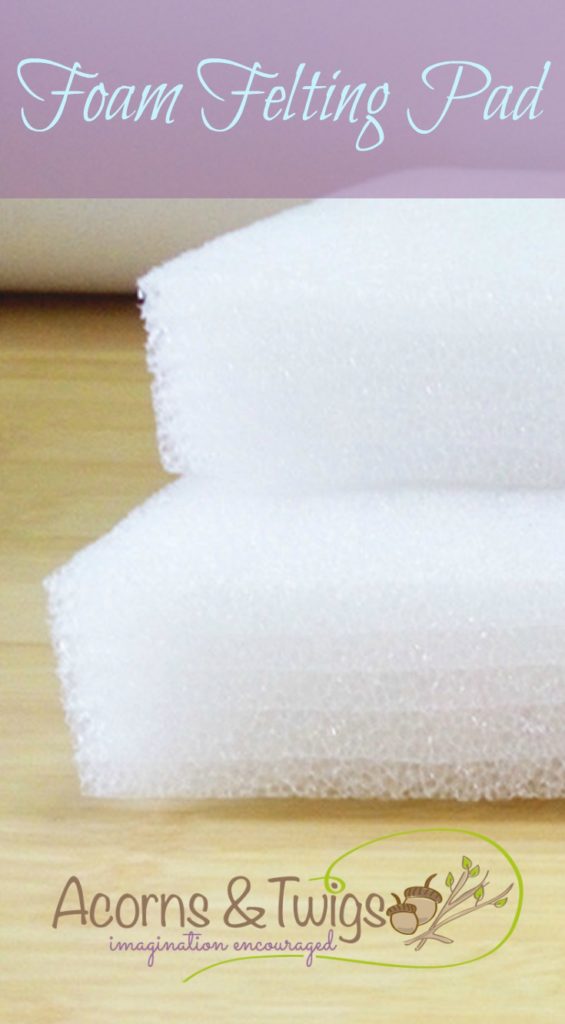
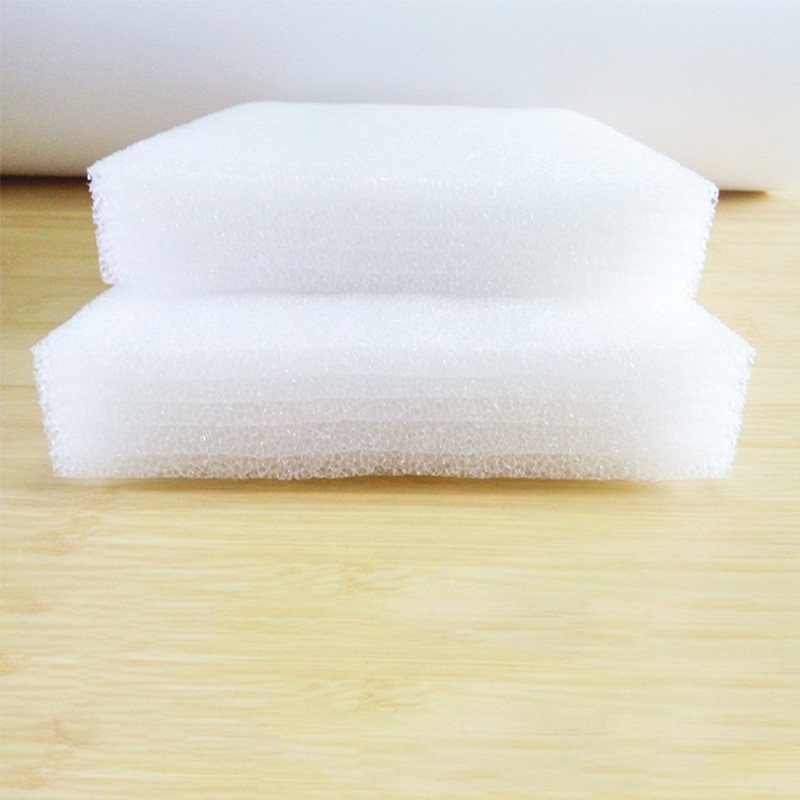
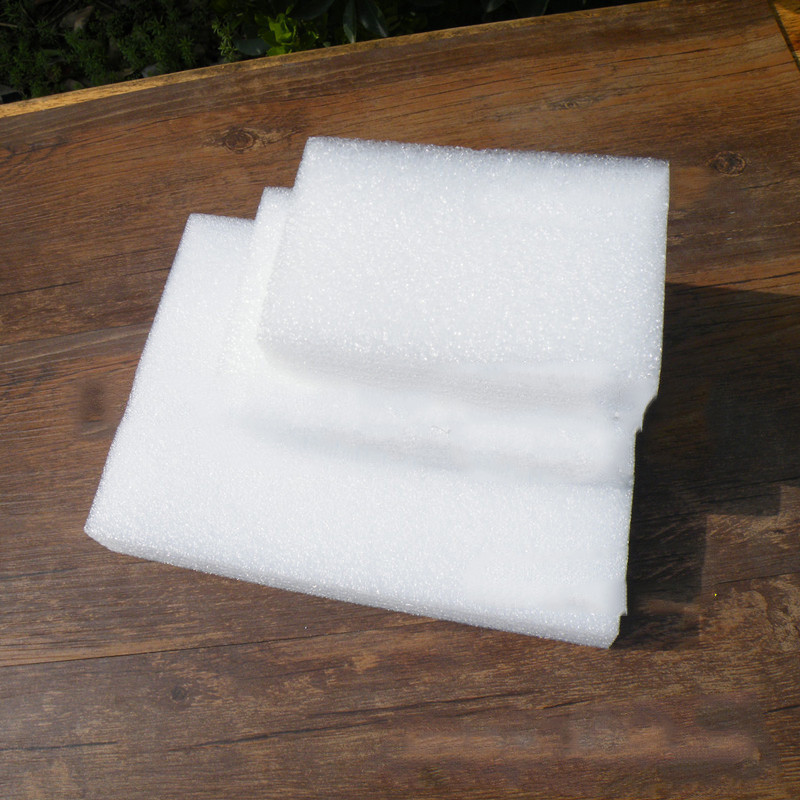
There is a foam that is perfect for needle felting purposes and it has a thin, skin/film/layer on one side, preventing the wool to felt to the styrofoam.
Available in white or black. You can get them in several different sizes, guaranteeing you will find the right size to fit your next project.
It is very firm. It even makes a quite annoying crunch sound with each stab you take. If you can hear beyond it, then this might be a great option for you. For this reason, I personally can’t stand it.
You can fixate your work with a few sewing pins and it pretty much satisfies all the criteria on our list.
It gets a bonus point because it also serves as a felting needle holder. You can simply stick your needles into the pad while not in use and they won’t roll around on you.
- flat, stable & smooth surface
- soft and cushioning
- possibility of fastening something to it
- comfortable usage
- sufficient in size
- transportable
- not feltable
- Bonus: felting needle holder
Sponge Felting Pad
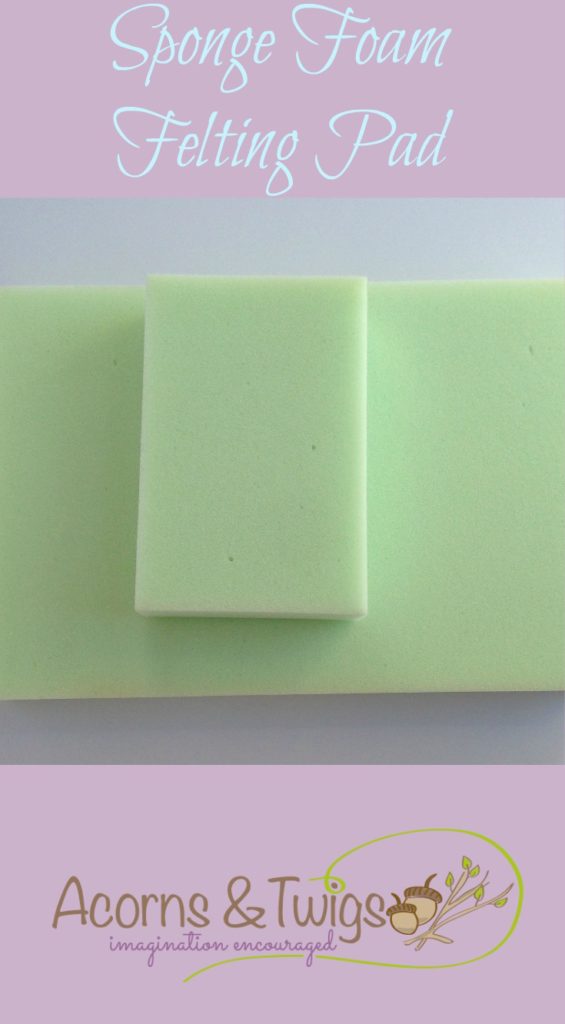
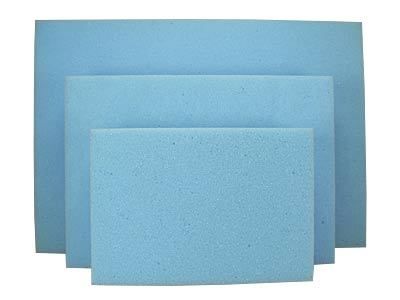
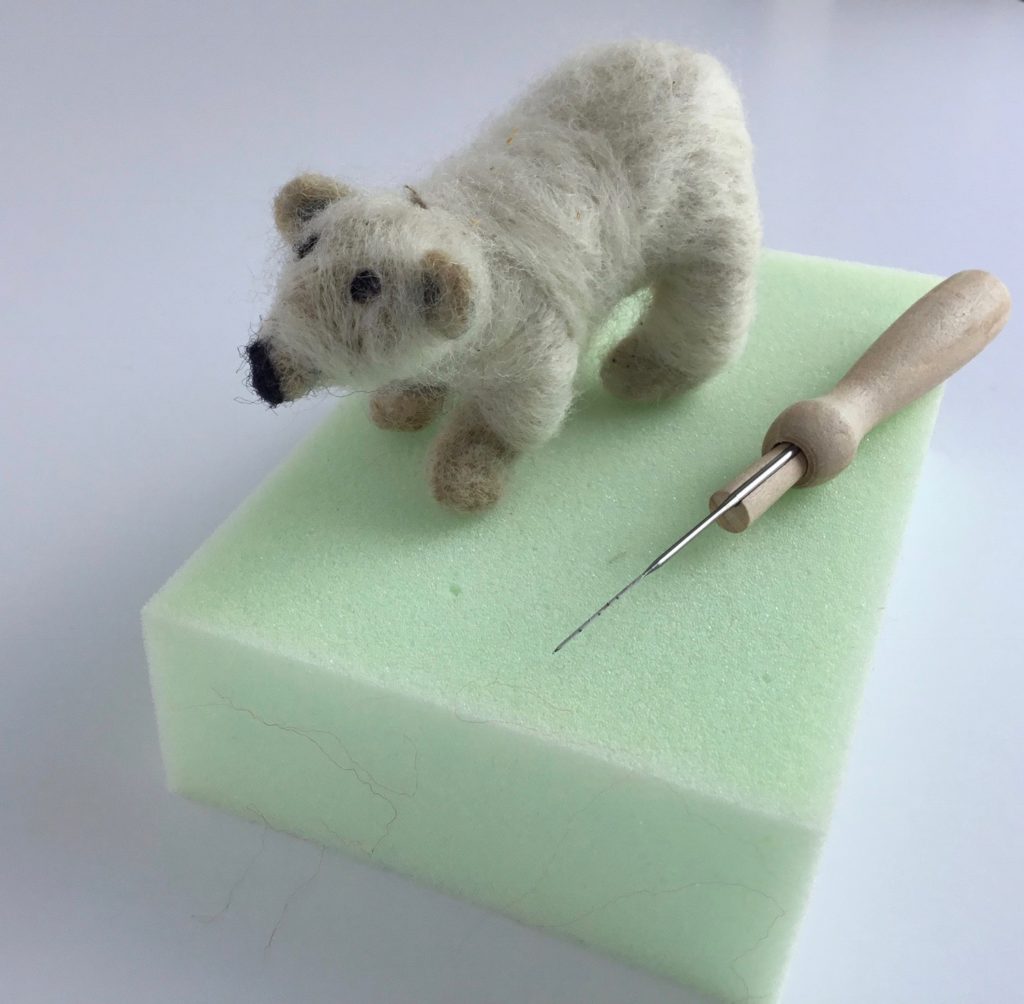
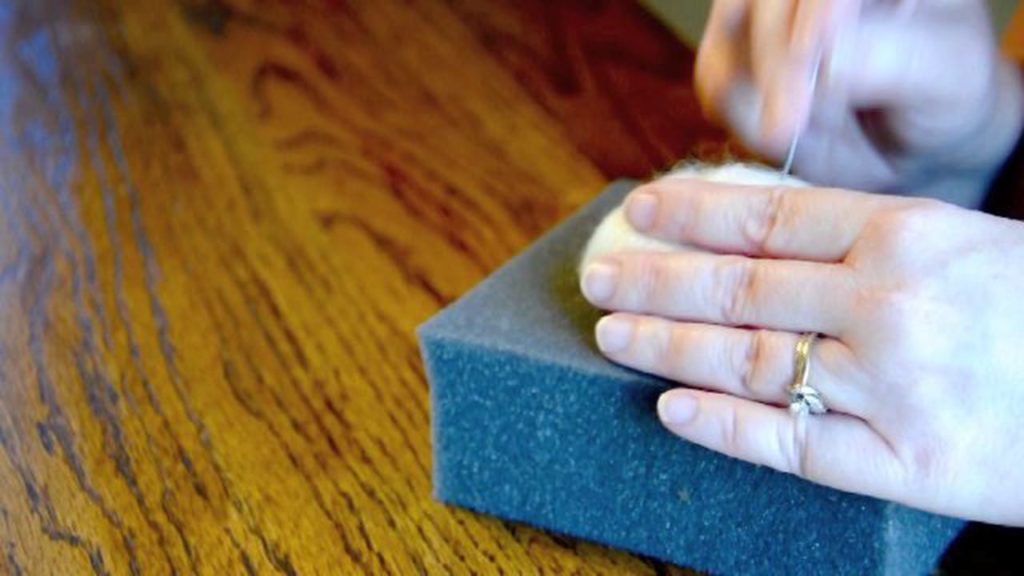
The best needle felting underlay is, in my opinion, the sponge. Of course you could use just a big, yellow sponge – we have one in the garage for car washing. But there are some available for needle felting purposes. They do not have the sticky/velvety feel of the yellow sponge. They feel drier and are sometimes a bit softer. Technically, they are also a foam product, but they are much softer than the last option, so they are categorized as a sponge.
They are usually thicker than the foam options and therefore, can be easily used to work on your lap. I do recommend having a towel between the underlay and you leg, just in case. They also come in a variety of sizes and colors and do not make any noise when felting.
This also gets the bonus point due to its ability to serve as a needle holder as well.
This is my favorite and I highly recommend trying one out.
- flat, stable & smooth surface
- soft and cushioning
- possibility of fastening something to it
- comfortable usage
- sufficient in size
- transportable
- not feltable
- Bonus: felting needle holder
Your Shopping List
To help you get started right away, now that you know the purpose of a felting pad, and which will serve your purposes best, I’m including this list of links to the items we sell in our shop:
If you want to know even more about needle felting then I suggest you take a look at our e-book “Understand Needle Felting”.
About the Author Jenn
Hi! I'm Jenn! I'm an ambitious, creative and natural mama of four awesome kids: Amy (born in 2010), Blake (2011), Cody (2013), Lulu (2014) - yeah my husband and I took a year off in 2012 - go ahead, call us lazy :) My husband Gerhard, our four kids and I live in America’s heartland on a small, in-town acreage in Iowa – but that is pretty new. We are still grounding after an international move from Germany. This is not an understatement, an international move is WAY different than a normal move, but that is a whole different story! I am here to share our love, knowledge and experiences of waldorf in the home including holistic toys, crafts and food. My goal is also to share helpful tips on natural parenting and healthy play.
